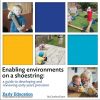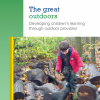National Audit Office queries low early years disadvantage funding
The National Audit Office’s new report, Improving educational outcomes for disadvantaged children, finds that in 2023-24, DfE allocated an estimated £9.2 billion to specifically focus


















